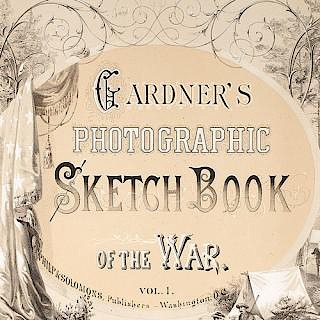Glenn Curtiss, "Curtiss Exhibit" Large Format Aviation Photographs
About Seller
6270 Este Ave.
Cincinnati , OH 45232
United States
With offices in Cincinnati, Cleveland and Denver, Cowan’s holds over 40 auctions each year, with annual sales exceeding $16M. We reach buyers around the globe, and take pride in our reputation for integrity, customer service and great results. A full-service house, Cowan’s Auctions specializes in Am...Read more
Two ways to bid:
- Leave a max absentee bid and the platform will bid on your behalf up to your maximum bid during the live auction.
- Bid live during the auction and your bids will be submitted real-time to the auctioneer.
Bid Increments
| Price | Bid Increment |
|---|---|
| $0 | $25 |
| $500 | $50 |
| $1,000 | $100 |
| $2,000 | $250 |
| $5,000 | $500 |
| $10,000 | $1,000 |
| $20,000 | $2,500 |
| $50,000 | $5,000 |
| $100,000 | $10,000 |
About Auction
Nov 21, 2014 - Nov 22, 2014
Cowan's Auctions dawnie@cowans.com
- Lot Description
Glenn Curtiss, Curtiss Exhibit Large Format Aviation Photographs
Lot of 12 large format prints, each measuring approx. 15 x 20.5 in., on larger, 18.75 x 20.5 in. mounts with applied paper labels that include a title, image number, and indication that they each come from a Curtiss Exhibit. A typed label from Robbins & Robbins/ Attorneys/ Hornell N.Y. is also affixed to each mount. Research indicates that this law practice was in operation during the early 1920s. Although unmarked, most of the images were originally taken by H.M. Benner of Hammondsport, NY. An interesting group of Curtiss images produced in a size that we have not previously encountered.
The lot includes the following titles: "Silver Dart" Built by Aerial Exp't Ass'n 1908 (3); Aero Soc. Machine ("Gold Bug") Built by Herring Curtiss Co. 1909; A.E.A. Glider Built by Aerial Exp. Ass'n.; "June Bug" Built by Aerial Exp't Ass'n. 1908; Rheims Machine (Gordon-Bennett) Built by Herring Curtiss Co. 1909; "White Wing" Built by Aerial Exp't Ass'n 1908 (2).
Aviation pioneer Glenn H. Curtiss (1878-1930) developed an interest in bicycles at a young age, and in the early 1900s, he started a business designing, building, and repairing bicycles. Eventually, he began adding motors to the bicycles, therefore converting them to motorcycles. He even started racing them. As a result of Curtiss' accomplishments with building and racing motorcycles, balloonist Thomas Scott Baldwin asked him to power his airship, the California Arrow, with a Curtiss engine. Baldwin also motivated Curtiss to become more involved with aviation. In 1906, he offered to sell the Wright Brothers one of his engines, but they declined.
The following year, Curtiss joined the Aerial Experiment Association, or AEA, which was founded by Alexander Graham Bell. He made great strides in aircraft experimentation while working with Bell and other members of the AEA, including winning the first leg of the Scientific American trophy in 1908 for flying a plane called the June Bug a distance of 5,090 feet across Pleasant Valley in Hammondsport. When the AEA disbanded in 1909, Curtiss began working on his own, but he had been given the AEA's aircraft designs and patents.
In 1909, Curtiss sold his plane called the Gold Bug, or Curtiss No. 1, to the New York Aero Club for $5000. The sale of Curtiss' new plane angered the Wright Brothers and triggered a patent battle that would not end until 1914 when the U.S. Government pressured both the Wright and Curtiss companies to resolve their differences in order to meet the aviation needs of the war.
By the 1910s, Curtiss was focusing on naval aviation and how he could improve it. In 1911, he became the first to use an aircraft to make a ship-borne landing, to make a successful takeoff from water, and to make a hydroplane flight to a ship. As a result of these achievements, the U.S. Navy ordered two Curtiss A-1 hydroplanes, and Curtiss earned the title of "Father of American Naval Aviation."
Between 1913 and 1914, Curtiss began building tractor airplanes, which have propellers up front, opposed to the earliest airplanes, which have propellers in the back. By 1916, Curtis had modified his earlier models of the tractor airplanes to produce JN-4, which was nicknamed the Jenny. He came out with more than 15 versions of this plane among other models including flying boats over the next few years and manufactured more aircraft than any other American during World War I. Curtiss continued to display his innovative nature and inventiveness until he died from complications after appendix surgery in Buffalo, NY, in 1930.Some soiling to images. Toning throughout. Wear to mounts, especially along edges and corners. Loss to some of the mounts, especially along perimeter. It appears that some of the mounts underwent some water damage as well.Condition
- Shipping Info
-
SHIPPING. At the request of the buyer, Cowan's will authorize the shipment of purchased items. Shipments usually occur within two weeks after payment has been received. Shipment is generally made via UPS Ground service. Unless buyer gives special instructions, the shipping method shall be at the sole discretion of Cowan's Auctions, Inc.. Cowan's is in no way responsible for the acts or omissions of independent handlers, packers or shippers of purchased items or for any loss, damage or delay from the packing or shipping of any property.
-
- Buyer's Premium



 EUR
EUR CAD
CAD AUD
AUD GBP
GBP MXN
MXN HKD
HKD CNY
CNY MYR
MYR SEK
SEK SGD
SGD CHF
CHF THB
THB










